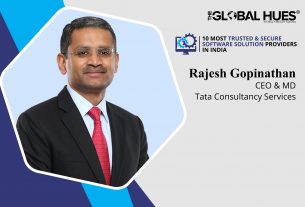Imagine a regular evening at home. You’re sitting near the balcony, using your phone, scrolling through social media. Suddenly, a video call comes in from your best friend, Sarah. She looks worried and tells you about a family emergency that requires money for immediate surgery. As you trust her completely, you send the money right away.
But later, you discover something shocking. It wasn’t Sarah on the call—it was a computer program pretending to be her, tricking you into sending money. This has happened for real with many people around the world.
In July 2023, a 73-year-old man in Kerala, India fell victim to an AI deepfake scam losing Rs 40,000. He received a call from a scammer pretending to be his office colleague, asking for money for an emergency surgery at a hospital in Mumbai. In another incident in 2019, cybercriminals used deepfake phishing to fool the CEO of a U.K.-based energy firm into sending them $243,000. An individual in China lost over Rs 5 crore after a person pretending to be his friend tricked him into giving money. Well, there’s more to raise your eyebrows.
According to a report by McAfee, 69% of people in India think they don’t know or cannot tell the difference between an AI voice and a real voice. The report also says that 83% of Indian victims said they had a loss of money because of fake voice calls.
What Exactly is Deepfake?
As the term itself suggests, deepfake technology uses artificial intelligence to replace the likeness of one person with another in audio or video. In Layman’s language, deepfake manipulates videos or images to give the impression that someone else is there when they are not there in reality.
There was a reason why deepfake came into existence. The reason is movies. This technology was developed to make special and realistic effects in movies and videos. Before deepfake came into the picture, special effects production was quite costly and challenging. Deepfake made it easier for producers to utilise AI to position the actors in a new location or make them look younger or older using an existing video, rather than reshooting the scene.
Furthermore, deepfake technology can be put to more uses like developing new characters in films, virtual reality or video games. One of the best uses of this technology is the creation of educational content where students can immerse themselves in learning experiences like being taught scientific formulas by Albert Einstein or gaining insights about India’s freedom struggle from Mahatma Gandhi.
But Here’s The Catch!
While deepfake technology can be put to many uses, it comes with serious challenges. It can be used to create fake videos or voices to spread false information or narratives to harm someone’s reputation. Victims of deepfake manipulation may not only suffer reputational harm but also serious health issues. Even if they are innocent, fake videos can falsely portray them engaging in undesirable actions or statements.
Moreover, the negative use of deepfakes and AI-generated misinformation can erode trust in online content, making people more sceptical and less willing to accept digital information.
How To Detect A Deepfake?
If you think you will never fall victim to deepfake technology, then you are wrong! There are some indicators that can help you identify if the content you are consuming is fake.
- First and foremost, check the source. Where is the content coming from? You must check who has posted the content and where it is posted.
- Do you see any unclear or fuzzy elements within the content? Pay special attention to specific areas like skin, hair, or faces.
- Ensure that the audio and visuals in the content are in sync. Check if the audio matches the person’s movements and expressions.
- Lighting too plays an important role. Pay attention to the lighting conditions as well. If you see any inconsistencies between the video’s lighting and the expected lighting then it’s most probable that it is fake or manipulated.

Rizwan Shaikh
Ethical Hacker, Information Security Researcher & Cyber Law Consultant
Deepfake technology can create entirely fictional photos from scratch. It is not limited to photos, but Audio and Video can be deepfaked too.
If anyone becomes the victim of such AI edited video, which is harming their reputation or causes negative consequences, they should immediately report it to:
1) Local cyber cell/law enforcement body
2) Report abuse complaints at the website where it is hosted
All social media giants including X, formerly known as Twitter, Facebook and Instagram have reporting options for abusive/harmful content on their websites and applications. One can also report this to the hosting service provider and registrar of any website. The details of the registrar and hosting service provider are available openly on the internet from ‘who is’ info fetching websites.
It is not easy to identify the difference between real content and deepfaked content. However, poor quality made deepfake content is easier to spot.
AI has both pros & cons. It’s like both criminals & cops are human beings. AI can help in detecting deep fakes created using AI. Tech companies are researching and working on fake detections which can flag the content & complain to the respective platform to get it removed.
The Bottom Line
Technology is a double-edged sword. It has the power to simplify our lives, but at the same time, it can also complicate and disrupt them. Therefore, we should carefully analyse its impact on our lives. Technology can bring great benefits but it also presents challenges that require thoughtful consideration.



